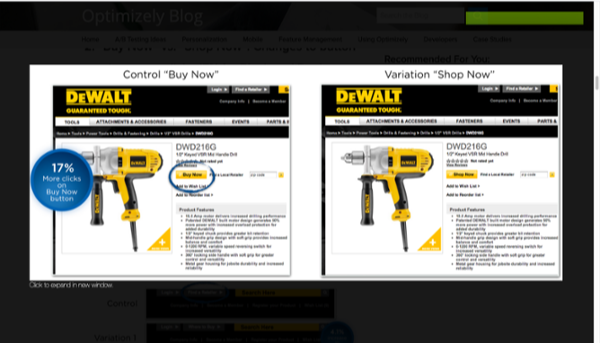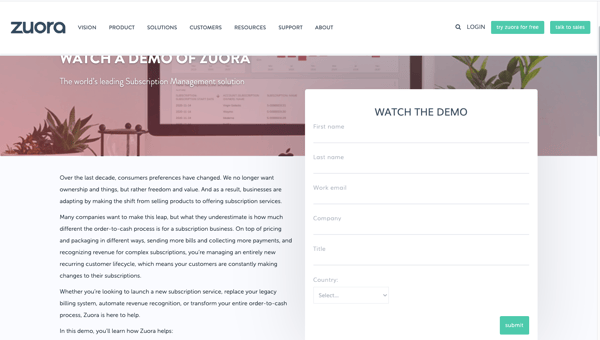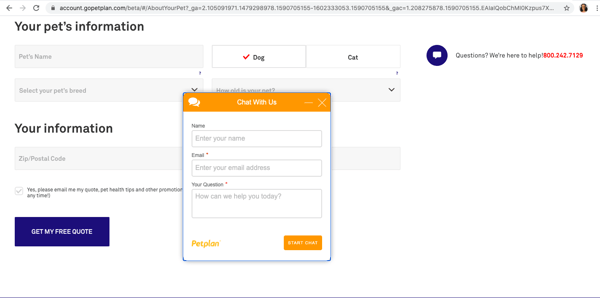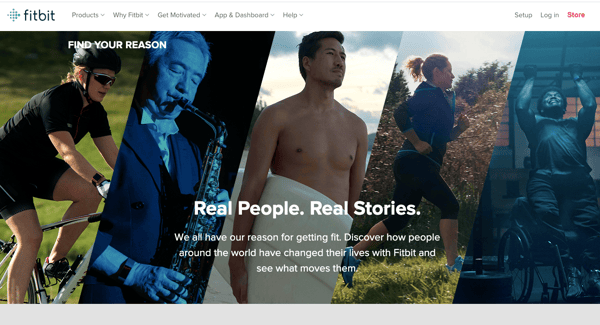Conversion Rate Optimization Tips
- 1. Add Calls to Action (CTAs) Within Your Content.
- 2. Leverage the Power of Lead Flows.
- 3. Create and Publish Personalized Content.
- 4. Follow Best Practices for SEO.
- 5. Include Chat Features on High Performing Pages.
- 6. Showcase Social Proof Using Testimonials and Reviews.
An important aspect of sales and marketing in today’s market involves driving traffic toward company websites.
Your site needs to convert some of that awesome traffic into leads for sales representatives to close deals. A great way to make sure your site is converting prospects into leads is by developing and implementing a conversion rate optimization (CRO) program.
Conversion rates directly impact your business, so it's important to learn what they are, how to optimize your website for more conversions, and what best practices to follow.
What Is Conversion Rate Optimization (CRO)?
Conversion rate optimization is a digital marketing process that is used to enhance a website’s content to increase the number of conversions a website receives.
For example, if a company’s website has a high conversion rate, it means the website is user friendly, well designed, attracts the proper target audience, and is formatted correctly. The marketing team has likely optimized their site to achieve the highest conversion rate possible to fit its goals and objectives.
When you optimize your website for conversions, it provides you with the opportunity to lower acquisition costs, increase your revenue, boost your amount of qualified leads, and gain more value from your current prospects and customers.
The first step to optimizing your site for conversions is knowing how to calculate you conversion rate, which you can easily accomplish with some quick math.
How To Calculate Conversion Rate
Knowing the conversion rate for your website helps you understand what percentage of your site visitors are completing a desired action, such as signing up for email lists, adding a product to the cart, purchasing a product or service, or requesting a quote.
Here are two simple steps you can follow to calculate your conversion rate:
- Divide the number of conversions on your site by the number of visitors on your site in a set time period (day, week, month, or year).
- Multiply that number by 100 to get a conversion percentage.
Conversion Rate Formula
Here is a formula to help you determine your current conversion rate:
Number of Conversions / Number of Visitors × 100 = Conversion Rate
OR
C / V *100 = CR
To explain the process better, say there was a company that sold graphic T-shirts named Sunshine T-Shirt Co. The goal of Sunshine T-Shirt’s website conversion is to have a visitor go through their marketing and sales funnel to purchase a T-shirt. Sunshine T-Shirt Co. got 10,000 visitors and 400 conversions in April.
The conversion rate can be represented by the following formula:
400 / 10,000 x 100 = 4% conversion rate
Once you complete the conversion rate calculation to find out what your current conversions are, you can start to apply best practices to your site to increase your conversions and hit your goals.
4 Best Practices For Conversion Rate Optimization
There are many different ways you can boost your conversion rate. Here are five best practices for you to apply to your website for the most effective CRO:
1. Set Realistic Goals and Expectations.
Increasing your conversion rate is not likely to happen overnight. It's essential that you set realistic expectations and follow each step of conversion rate optimization to achieve an increase in conversions and revenue.

The best way to set goals and expectations is to carefully analyze your target market and their buyer’s journey before you begin a CRO program. Follow the SMART goal framework in order to make them more actionable and attainable.
This may help you to better focus your time and resources on the proper CRO strategies.
2. Create a Conversion Roadmap.
Creating a conversion roadmap involves consistent and strategized testing for the pages on your website that are in line with your business goals. Conversion roadmaps help you to plan out long-term strategies and maximize your resources to bring you desired conversion rate results.
Here are some things you can do to create a conversion roadmap for your business:
- Clarify your goals and list them strategically.
- Conduct an audit of your current performance.
- Find testing ideas that work for your website, and prioritize the tests.
- Hypothesize the outcome.
As your results come in from testing, you must update your CRO roadmap to reflect which optimization techniques work for you.
3. Calculate the Revenue Increase From the CRO Program.
When you create a CRO program or hire CRO consultants, you should expect to see a healthy return on investment. The best way to calculate your revenue increase from CRO is to know how much of a conversion increase you wish to have from your CRO implementation.
For example, if you expect to achieve a 25 percent increase in conversions over a 12-month period, you may use two approaches to calculate the revenue increase.
- Approach 1: Determine how much money you gain by increasing your conversions by 25 percent. Figure out your gross margin on the revenue increase and determine if that amount is sufficient to leave you with a decent return on investment after you subtract the cost of CRO.
- Approach 2: Find out how much you invested in your CRO program. Then, take your current margins and revenue for the year and calculate the minimum amount of revenue your company must make to break even on your investment. Next, calculate how much revenue is required to make your normal ROI for a similar program.
4. Review Technical Requirements.
Technical aspects of your website are a large part of your CRO success. Bugs may be the quickest way for your conversion rate to decrease.
Make sure you have someone on your team who can review technical requirements and fix bugs and other issues on your website. Staying prepared to fix technical problems when you implement your conversion rate optimization program helps you to save time, and it increases your chances of scoring high conversion rates.
CRO Tips To Help You Build Effective Strategies
Conversion rate optimization strategies work differently for each website depending on your target audience and overall business model. Here are some tips that may help you develop a CRO strategy for your website:
Add Calls to Action (CTAs) Within Your Content.
CTAs in blog content or other written content helps to build trust with your customers. They are more likely to become a lead if you have text-based CTAs instead of banner or bottom of the page CTAs.
The wording of CTAs also matters for CRO since testing confirms that some CTAs receive higher click rates depending on the wording.
For example, DeWalt, a Black and Decker brand, received 17 more clicks on a “Buy Now” CTA button instead of a “Shop Now” CTA button.

That small adjustment in wording yielded some big results.
Leverage the Power of Lead Flows.
Lead flows are used as a conversion point to attract site visitors’ attention so they fill out a form included on the page they are on before they exit your site. Lead flows may be static or located on a drop-down banner, slide-in box, or pop-up box.
For example, Zuora has a static "Watch The Demo" lead flow that captures visitors' attention when they first land on the Zuora homepage.

Use Personalized Content.
Understanding your buyer personas may help you to increase your conversions by giving your customer what they are searching for. This means you must personalize the content you publish on your site to provide value for your customers.
Spotify offers its users new music content based on previous music they have listened to, which directly impacts how much their users interact with their content. The more personalized the experience, the more likely users are to engage with it.

Spotify is one of the best examples of subscription-based business models. By continuously tailored the experience the more people use the platform, they earn more engagement and improved customer satisfaction.
Apply SEO Best Practices.
Analyze your current high-performing blog posts and determine which SEO principles you applied. Optimize your other blog posts to gain opportunities for large conversions.
Zappos offers its site visitors a "Beyond the Box Blog" that uses SEO principles to attract prospects and customers. Many of the blog posts are about fitness, the outdoors, work, and self-care. The blog doesn't center around shoes, but their posts relate back to shoes in some way.

Include Chat Features.
Adding chat features to your high-converting webpages allows your visitors to get more information in real time. This may push them to make an action-based decision where they decide to purchase your product or sign up for your service sooner.
Petplan pet insurance includes chat features on the quotes page of its website to help future customers with any questions they have. This keeps visitors engaged to help move them toward taking a specific action, like getting a free quote.

Showcase Social Proof.
A good way to outline the experience past customers have had with your company is to post testimonials and reviews on your website. This helps your company build credibility, which results in building trust with your prospects.
For example, Fitbit features success stories from real customers on their website. The stories they use likely motivate people to imagine a success story of their own, which aligns with Fitbit products.

You have many options when you choose to apply CRO for your company site. You need to test various aspects of conversion rate optimization to discover what works best for your company and your customers to gain the highest amount of conversions possible.


Erika Giles
Erika is a Marketing Copywriter at Bluleadz. She is a huge fan of houseplants and podcasts about conspiracy theories. She spends most of her free time reading, writing, and enjoying the outdoors.